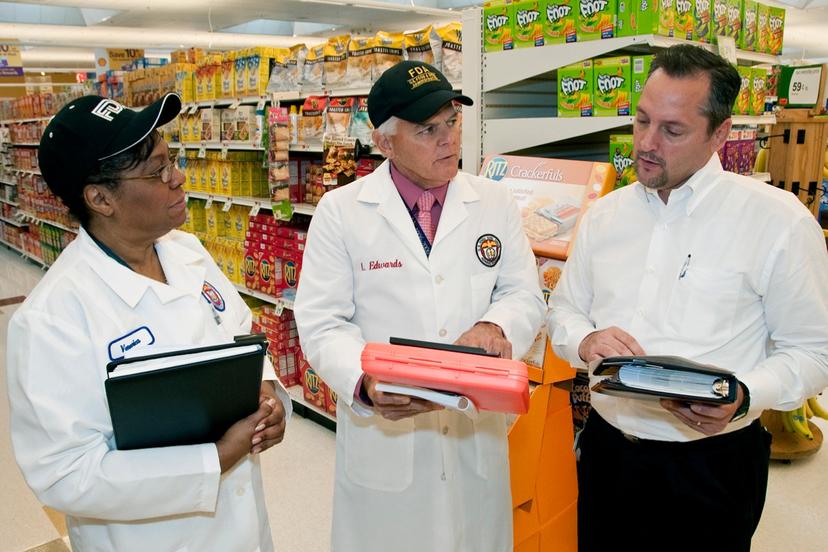Retail

Structure
Although shopping in a retail store, from a catalog, or from the Internet is a common activity, the actual work of a retail organization is a mystery to most people. One of the primary tasks of retail stores is to be constantly aware of the changing lifestyle habits, needs, and desires of its customers. They must anticipate the customers’ wishes days, weeks, and even months ahead of time. In addition, because of their competition, retailers must race to get the merchandise first, to offer the best service, and to provide the most attractive setting so that customers are drawn into their particular establishment.
In general, stores can be divided into two major groups: specialty stores and general merchandise stores. Specialty stores carry just one category of merchandise or several types of closely related merchandise. Specialty stores include apparel shops, building-supply stores, automobile dealers, gas stations, household-appliance stores, florists, optical-goods stores, newsstands, drugstores, shoe stores, sporting-goods stores, computer-sales outlets, grocery stores, and supermarkets.
General merchandise stores include variety stores, junior department stores, and department stores. They stock a multitude of different items under one roof. Variety stores carry broad assortments of goods at limited prices. Junior department stores carry various categories of merchandise in somewhat broader price ranges. Department stores carry large assortments of apparel, home goods, and staple items in even more extensive price ranges. When specialty stores or general merchandise stores feature self-service and bargain prices, they usually are called mass merchandisers.
Some stores have only a single location, while others, such as chain organizations and franchise operations, have more than one. The largest stores have several thousand locations. Chain organizations are parent stores with branches. Franchise operations allow individually owned stores to market or sell their line of goods under an established brand.
Many people are involved in buying merchandise in large organizations, whereas in small stores one or two persons may do all the buying. Before merchandise can be purchased from wholesalers, however, store executives plan for the kinds and amounts of merchandise to be bought. Analyses of previous sales reveal how successful the store was in selling similar merchandise during a comparable period. After these records are examined and the amount of such merchandise already in the store is determined, executives decide on the amount of new merchandise to be purchased. The person who does this kind of planning and supervising in a large organization may be called a merchandiser or merchandise manager.
After the general buying plan has been established, the buyer must go to manufacturers’ showrooms or to factories in the United States or abroad to look at the merchandise and select from the available items what the executives have determined will be in demand for the coming season. Contracts then are signed for the delivery of the goods. Buying may be completed as much as six months before the buyer anticipates selling the goods in the store.
Store managers of chain stores and department managers in branch stores are responsible not only for merchandise, but also for department or store operations. The department manager acts as a departmental supervisor for the buyer in the branch store but does not have the responsibility for actual selection and purchase of merchandise. In addition, to keep track of inventory, many larger national retailers are using radio-frequency identification technology (RFID), which are tags incorporated into or attached to products. These tags contain digital data that can be read up to several meters away.
In a small store, usually one store manager has final responsibility for all operational activities. In a larger organization, each function may be supervised by a separate manager. Managers could be in charge of receiving goods, marking them, placing them in the stockrooms or warehouse, and subsequently moving the goods to the selling floor. After the merchandise is sold, other managers may be in charge of wrapping stations and delivery services. Supervision of the selling floor and handling of customer returns and complaints also are activities carried out by operating personnel. Elevator service, housekeeping service, and the relocation of goods for special selling seasons are further responsibilities of operating personnel.
Many large retail organizations maintain sales promotion, advertising, and display staffs. The people who work in these fields are responsible for the overall impression that the store creates. A favorable image generates more business for the retailer. Those who produce advertising include the advertising manager, copywriters, graphic designers, desktop publishing specialists, artists, and photographers.
Most of the positions in marketing require creative talent. Therefore, those who apply for these jobs usually excel in writing or artwork, or they have had experience in staging shows or running school publicity events.
For retailers that sell on the Internet, there may be a separate department with e-commerce workers who perform similar merchandising, management, customer service, and marketing functions for the online operation.
In small stores, most owners or managers employ part-time accountants to take care of the financial records of the firm. The finances of a large store or chain of stores usually are administered by a controller, who has an accounting background and knowledge of computer systems.
